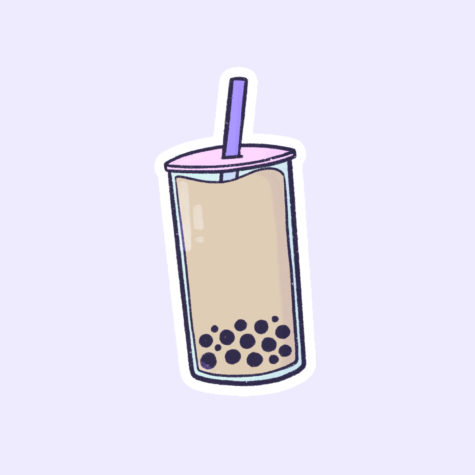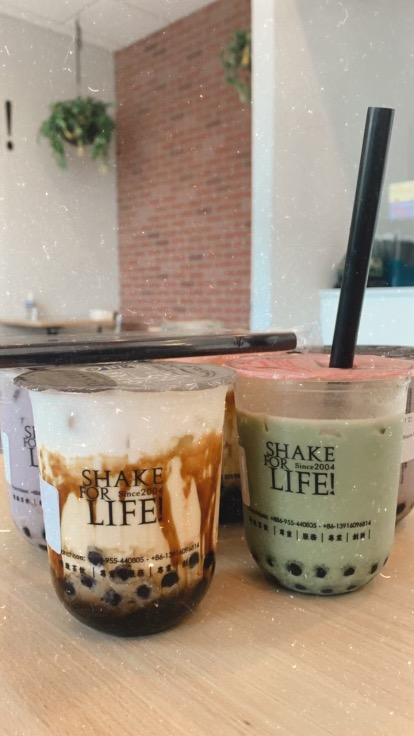RM staff and students obsess over bubble tea
People around the world are infatuated with bubble tea, and with good reason too. Staff and students at RM contribute to the international boba sensation.
October 31, 2021
The popularity of bubble tea, a growing international sensation, has increased dramatically over the years and has gained traction among the staff and students at Richard Montgomery High School.
Bubble tea has many different monikers. Its most commonly used nickname is “boba,” but people sometimes refer to it as “pearl tea” or “tapioca tea.” Boba originated in Taiwan and is thought to have been integrated into American culture by Taiwanese immigrants. The term “boba” itself actually refers to the chewy, penny-sized black pearls that are the drink’s defining characteristic. The pearls are made from tapioca starch that is boiled in hot water and then submerged in sugary syrup for hours to transform the tasteless white ball into the mouth-watering boba pearls that many enjoy.
“Boba is a delicious concoction — it’s sweet, it’s chewy, and I just really love the texture of the boba in my mouth,” sophomore Zachary Zhao said.
Teachers also share the excitement of getting boba. Biology teacher Bessy Albaugh tried boba after being coaxed to do so by her friend. “She found a tiny, hidden shop in College Park and she was like, ‘you have to try it, it’s so good,’” Mrs. Albaugh said. “I choked on the first one but it was

a wonderful experience and it tasted so good that I had to get it again.”
Chemistry teacher Akshay Gandhi first tasted boba several years ago. “I grew up in this area and I had a lot of friends who would drink it so I got it and ended up loving it,” Mr. Gandhi said.
While the texture of its tapioca pearls is what makes boba unique, many have also found its ability to be customized to the consumer’s preferences appealing. If someone preferred a less sugary drink, they could simply adjust the sugar level of the order as they see fit. Customers can also adjust the level of ice in the drink and add toppings in addition to boba, like jelly and pudding.
For people who do not find the bubbles in the tea particularly appealing, they have the option to get a slushie or a regular tea at most bubble tea shops.
A short walk from RM leads to several bubble tea shops. During lunch, it is quite common to see students carrying their bubble tea around.
Junior Aishwarya Thalla was introduced to boba as a freshman. “When I first came to RM, people were like, ‘it’s a custom here to go get bubble tea at least once,’” Thalla said. “There’s so many different flavors that people recommend and it’s a cool experience with friends.”
Popular bubble tea shops around RM include Ding Tea, Gong Cha and Kung Fu Tea, ordered from closest to farthest.
At Ding Tea, which is found just south of RM on Rockville Pike, Thalla recommends the brown sugar milk tea. Junior Lindsey Zhang recommends the honey green tea and taro green tea.
After school, Zhao sometimes goes to the Gong Cha in The Spot Asian Food Hall, located in Rockville Town Center. He recommends the oolong bubble tea and the sweet potato smoothie.
On his own time, junior Daniel Coxson patronizes Kung Fu Tea, which is located near the Rockville Memorial Library. He recommends the peach bubble tea. Mrs. Albaugh also goes to Kung Fu Tea and recommends the Oreo Cream Wow.
Mr. Gandhi does not have a preference for a bubble tea shop, but when he gets a craving for boba, whatever shop that is closest will do. “I don’t get super fancy, usually if I’m just trying to have something simple I go with just a green tea with pearls at the bottom,” Mr. Gandhi said. “I don’t like milk teas because I’m lactose intolerant.”
Junior Vincent Tsai has a unique boba experience. “I make boba at home with the tea available,” Tsai said. “I prefer the homemade version since the store-bought ones are too sweet.”
The versatility of boba allows everyone to get in on the fun.



